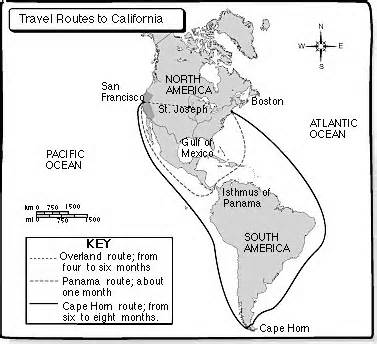Encyclopedia Dubuque
"Encyclopedia Dubuque is the online authority for all things Dubuque, written by the people who know the city best.”
Marshall Cohen—researcher and producer, CNN
Affiliated with the Local History Network of the State Historical Society of Iowa, and the Iowa Museum Association.
DUBUQUE IN THE CALIFORNIA GOLD RUSH
This entry is in the early stage of development.
Note: An exhaustive and fascinating history of this topic has been prepared by Robert F. Klein in his book Dubuque During the California Gold Rush.
DUBUQUE IN THE CALIFORNIA GOLD RUSH. The California gold rush began on January 24, 1848, when James W. Marshall discovered a gold nugget in the American River while constructing a sawmill for John Sutter, a Sacramento businessman and agricultural pioneer. News of Marshall’s discovery brought thousands of immigrants to California from across in the United States and internationally. The "49ers," as the gold prospectors were known, caused California's population to soar. In 1848 before the discovery of gold, California had a population of some 12,000 Mexicans - including Californians of Mexican descent, called Californios - in addition to about 20,000 Native Americans and only 2,000 Yankee frontiersmen, soldiers, and settlers. (1) In San Francisco, the population grew from 1,000 in 1848 to over 20,000 by 1850. (2) By 1850, there were more than 100,000 immigrants in California. (3)
At first, there were only two routes. The first involved a six-month sea voyage from New York around the tip of South America to San Diego or San Francisco. Seasickness, bug-infested food, boredom, and high expense made this route unattractive for many would-be prospectors. The second route brought travelers over the Oregon-California Trail in covered wagons—over rugged terrain and hostile territory. This journey averaged six months' duration. (4) By 1850, the length and difficulty of both routes inspired the construction of the Panama Railway, the world's first transcontinental railroad. Built across the Isthmus of Panama by private American companies to speed travel to California, the railroad helped to cut months from the long voyage around South America.
Nearly $2,000,000,000 in gold was found. (5)
On March 19, 1849, fourteen wagons of miners bound for the gold field crossed the river here. Merritt, Mobley, Hammond, Gilliam, Alverson, Cox, Coriell and others left for California by way of the Isthmus of Panama. The California Society was organized, so great was the excitement. (6)
In September, 1849, a second California "fever" struck Dubuque and many more departed. Valentine Glenat, prominent merchant and judge of probate here, died of CHOLERA in the Rocky Mountains while on his way to the gold fields. (7)
In April, 1850, the Dubuque Emigrating Association consisted of fifty-four men and twenty wagons bound for California. The organization occurred at Council Bluffs. (8)
Few miners ever struck it rich finding gold. More fortunes were made "mining the miners." Dubuque residents who remained in California, for example, may have purchased one of the prefabricated homes loaded on a ship in New Bedford, Massachusetts and brought to California around Cape Horn to San Francisco by Edward Nye. (9)
Years later, interest in California gold was still strong enough to organize the BELL GOLD MINING COMPANY.
---
Source:
1. "The Gold Rushes of North America," A Calliope Fact Sheet. Online: http://www.calliope.org/gold/gold2.html
2. "California Gold Rush," Harvard University Library Open Collections Program. Online: http://ocp.hul.harvard.edu/immigration/goldrush.html
3. "The Gold Rushes..."
4. Ibid.
5. "History of the Gold Rush," Online: http://www.historichwy49.com/goldrush.html
6. Oldt, Franklin T. History of Dubuque County, Iowa. Online: http://www.ebooksread.com/authors-eng/franklin-t-oldt/history-of-dubuque-county-iowa-being-a-general-survey-of-dubuque-county-histor-tdl/page-9-history-of-dubuque-county-iowa-being-a-general-survey-of-dubuque-county-histor-tdl.shtml
7. Ibid.
9. Tucson Museum of Art, Tucson Arizona.


